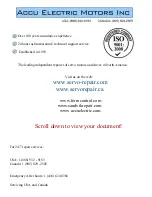
4.2.3 - Using terminal C4 : torque limitation or
control
• b0 = 1 : Torque limitation (motor current).
The inverter frequency is controlled (terminal C2) and
the torque is limited to P4.
• b0 = 0 : Torque control (motor current).
The inverter is torque controlled following the reference
signal at terminal C4 (10V : torque equal to P4, 0V :
10 % of P4).
The frequency reference potentiometer is no longer used
and the output frequency is limited to P1, no-load motor.
4.3 - Using terminal C9 : maintain ramp
4.3.1 - Description of function
When terminal C9 is enabled, the motor speed is fixed.
The frequency reference modifications are not taken into
account. When terminal C9 is disabled, the motor follows
the new frequency reference.
4.3.2 - Application : implementing faster/slower speed
control
Connection diagrams section 3.8.4. (independant of ratings).
When operating in faster/slower speed control using KA2,
KA3, the direction of rotation of the motor is only reversed
after the output frequency changes to zero.
4.4 - Regulation with integrated PI control loop
4.4.1 - Use
This loop is used to regulate pressure, temperature,
flow rate, etc via a sensor providing data feedback
(current of 0 to 20mA).
4.4.2 - Precautions
• Data feedback sensor specifications
- output 4 - 20 mA, 20 - 4 mA or 0 to 20 mA,
- power supply (if provided by the FMV 2107 or
FMV 2307) : 24 VDC, 100 mA max.
• Wiring :
Use shielded cables, and do not place them next to the
power cables.
4.4.3- Connection
If the sensor has an external power supply or its own
power supply, only terminals A5 and C5 should be
connected.
4.4.4 - Commissioning
• Wiring the motor-inverter
From the diagrams in section 3.8.2.
- 1 running direction .
- P.I. sensor as follows :
• The standard motor-inverter should be
commissioned following the procedure in section
4.2.2.
• Check that the direction of rotation of the motor is
correct.
• Disable the run command (terminal C10 or C12).
• Program one after the other.
• Enable the run command (terminal C10 or C12).
• Adjustment procedure for P25 and P26
- Set the reference of the characteristic to be adjusted
(flow rate, pressure, temperature etc) to 10 % (at
terminal C2).
- Slowly increase the value of P25 so that the motor
starts to rotate. The speed should stabilise between 5
and 20 % of its maximum value.
- Increase the value of P25 again until the motor
becomes unstable, then decrease it by 20 %.
- Increase the value of P26 until the motor becomes
unstable, then decrease it by 20 %.
- Increase the reference and check that the sensor
feedback signal changes linearly (use a milliammeter
connected in series with terminal C5).
- If the system is unstable, decrease the proportional
gain P25.
• Stopping the motor
Disable the run command.
The value shown on the display decreases to 0, then it
indicates " rdY ".
• Switching the inverter off
Switch off using SB1.
32
Frequency inverters
FMV 2107
FMV 2307
RP1
0V
+10V
C1
C2
C3
C4
Frequency
reference
Torque
reference
RP2
RP1 = RP2 = 10k
Ω
FMV 2107 / FMV 2307
Sensor
Terminal A5
- power supply (0V)
Terminal A4
+ power supply (24V)
Terminal C5
Data feedback in
current (4/20mA or 20/4mA
or 0/20mA).
Terminal C11
Enable feedback terminal C5
Parameter
Remarks
b28 = 1
Enable the P.I. function
P25 = 1
Adjustment of proportional gain
P26 = 1
Adjustment of integral gain
b11
Selection of feedback type depending on the
sensor (in mA) --> 4 - 20, 20 - 4 or 0 - 20.
P2 = 1.5
Adjustment of acceleration ramp
P3 = 1.5
Adjustment of deceleration ramp
C11
A5 A4
Sensor
Power supply
Feedback
C5 C6
0V +24V
0V
















































